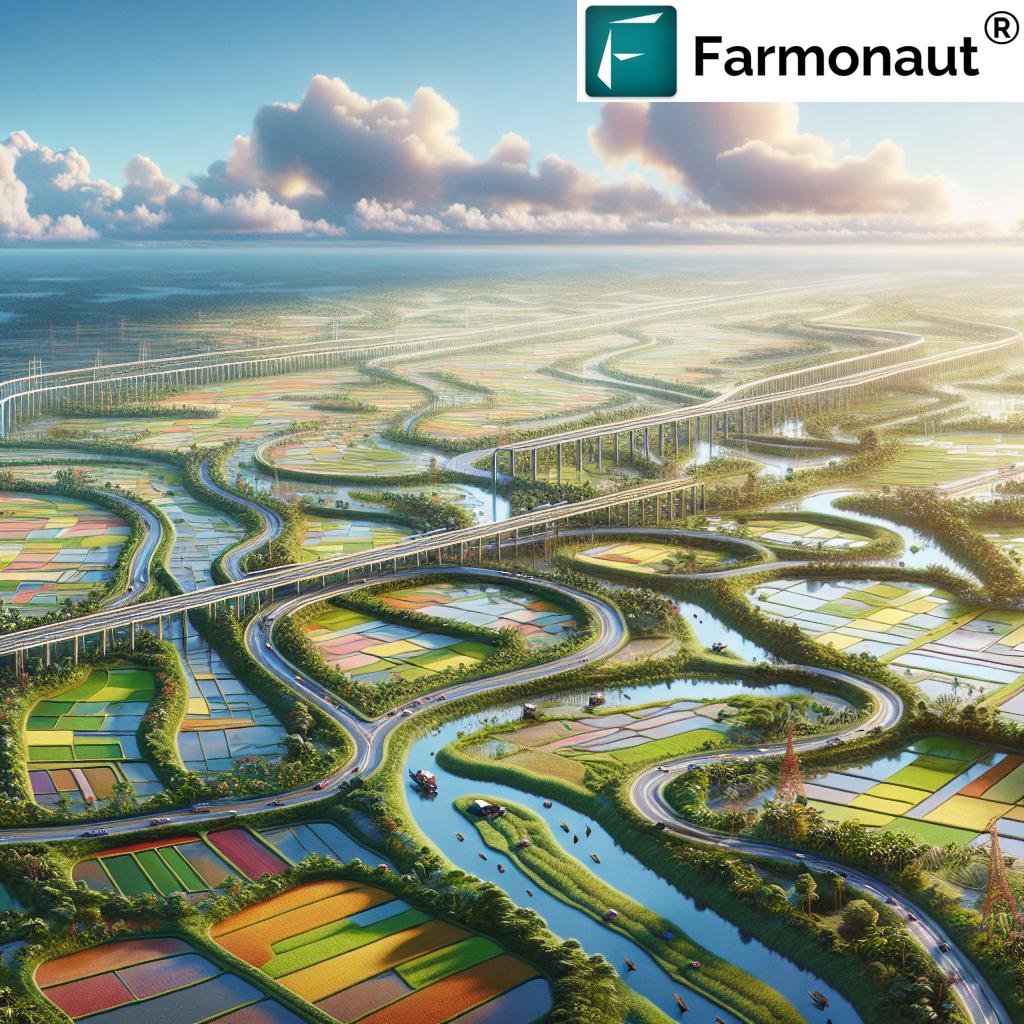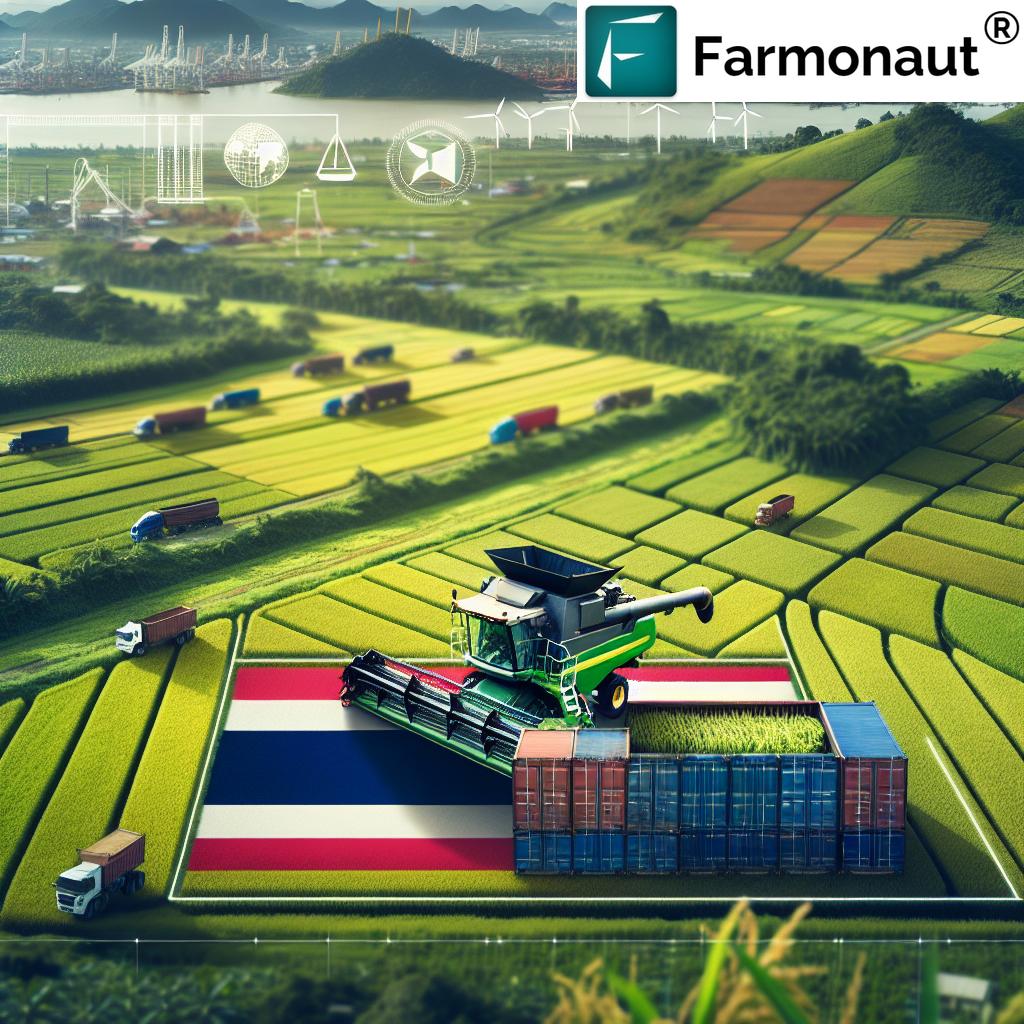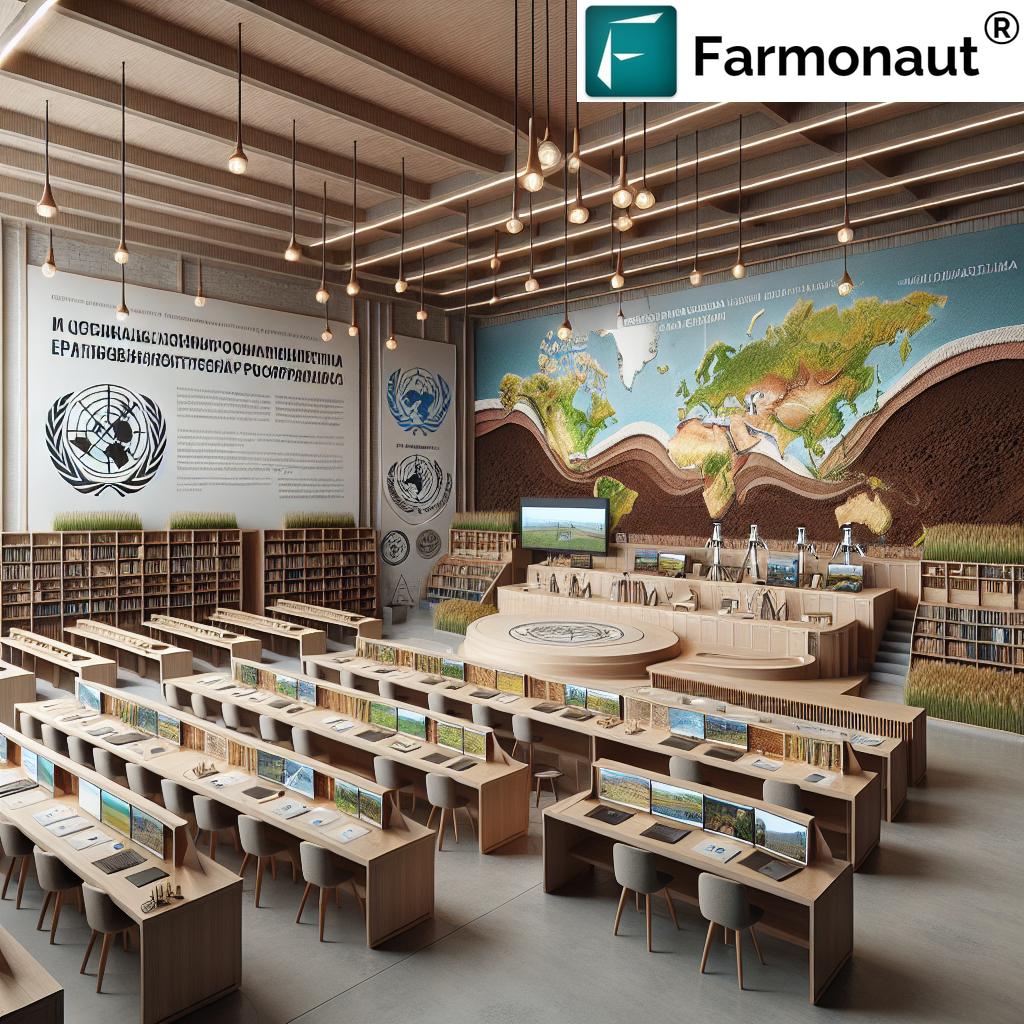Cultivation Systems Integration in Agriculture India 2025 — Sustainable Strategies, Maximum Impact
“By 2025, integrated cultivation systems in India could boost resource efficiency by up to 30% compared to traditional methods.”
Integration of Cultivation Systems in Indian Agriculture: A Pathway to Sustainable Farming in 2025
As the global population approaches unprecedented numbers, the backdrop of increasing resource demand, climate change, and depleting natural resources is placing unparalleled pressure on agriculture and cultivation everywhere, especially in India. The Indian agriculture sector confronts numerous challenges that call for innovative solutions—not just to feed a burgeoning population but to do so in a sustainable, climate-resilient, and resource-efficient manner.
Cultivation systems integration agriculture has emerged as a pivotal strategy in this era, offering a holistic pathway to bolster productivity, resilience, and long-term sustainability. In 2025, moving beyond fragmented efforts, integration in agriculture signifies the careful combination of multiple farming, ecological, and technological elements into cohesive systems—making Indian farming more productive, efficient, and sustainable.
Understanding Cultivation Systems Integration Agriculture
The term cultivation systems integration agriculture refers to the deliberate combination of diverse agricultural components within a single farming system. This integration is not random; it is a consciously designed amalgamation of various elements like crops, livestock, agroforestry, aquaculture, and even cutting-edge technologies. Its principal aim is to foster synergies, encourage resource sharing, and reduce vulnerabilities posed by climatic, economic, or biological shocks.
Unlike traditional monoculture approaches that focus on single crops or enterprises and often result in soil degradation and higher input dependency, integrated systems are multifunctional. They provide a range of benefits:
- Improved soil health through organic amendments and diversified cropping patterns
- Balanced nutrient cycles utilizing animal manure, crop residues, and legumes
- Diversified income streams, making farmer livelihoods more resilient
- Optimized resource efficiency (water, fertilizer, land use)
- Promotion of biodiversity and natural pest control mechanisms
Integration in agriculture embodies the connecting of traditional wisdom with modern technology—reshaping India’s agricultural landscape in 2025 and beyond.
Key Models of Cultivation Systems Integration in Indian Agriculture
In India, the concept of cultivation systems integration agriculture has matured into a spectrum of practical models. Below, we detail the primary systems making a difference across regions like Kerala, Himachal Pradesh, Rajasthan, Maharashtra, West Bengal, and beyond.
-
Agroforestry Systems — Integrating Trees with Crops or Livestock
Agroforestry represents the strategic integration of trees with agriculture and cultivation practices, including both crops and livestock. Trees offer ecological, economic, and environmental benefits:
- Improved soil structure via organic litter and enhanced microbial activity
- Microclimate regulation—reducing temperature extremes and wind erosion
- Carbon sequestration, supporting climate change mitigation
- Resource diversification: providing fruits, timber, fodder, and shade
States like Kerala and Himachal Pradesh lead here, employing agroforestry to boost income stability, resource conservation, and resilience.
-
Integrated Crop-Livestock Systems — Combination for Closed-Loop Efficiency
These systems entwine crop cultivation and livestock rearing, creating a closed-loop that reduces dependency on external inputs:
- Crop residues (e.g., straw, husk) feed animals
- Animal manure enriches soil fertility and accelerates nutrient cycles
- Enhanced farm resilience in dryland regions such as Rajasthan and Maharashtra
- Mitigation of risks associated with price or yield fluctuations by diversifying income
-
Rice-Fish Integrated Systems — Utilizing Waterlogged Paddies
The rice-fish system unlocks the potential of waterlogged paddies—a common feature in West Bengal and Assam:
- Enables fish cultivation alongside rice, boosting protein supplies and profitability
- Improves utilization of land and water—no additional acreage required
- Expands livelihood and food security for smallholder farmers
-
Crop Diversification and Intercropping — Multifunctional, Resilient Farms
Diversified crop systems and intercropping bolster resilience against climatic variability and market fluctuations:
- Growing multiple complementary crops enhances pest/disease control, yield stability, and nutrient cycles
- Examples: Integrating legumes with cereals for nitrogen fixation and enhanced soil fertility
- Efficient land use and balanced resource sharing
“Sustainable farming integration may increase Indian agricultural resilience to climate shocks by approximately 25% by 2025.”
Significance of Cultivation Systems Integration in Agriculture Cultivation in India
India is a mosaic of smallholder farms, rainfed regions, and fragmented land holdings. Integrating cultivation systems in agriculture holds immense promise, as it:
- Enhances productivity: By maximizing resource use per unit area, integrated approaches outperform monocultures, producing more with less input.
- Boosts sustainability: Mimicking natural cycles and processes minimizes synthetic input reliance and promotes longer-term soil and environmental health.
- Builds climate resilience: Integration acts as a buffer, e.g., agroforestry’s microclimate control capacity insulates crops against heat and drought.
- Secures diversified income: Multiple enterprise streams—crops, livestock, and timber/fodder—protect farmers from single source failures, crucial for Indian economic stability.
- Supports soil and water conservation: Complex root systems and organic additions preserve soil structure, moisture retention, and reduce erosion in hilly and dryland areas.
Why Integration is the Pathway for Indian Agriculture in 2025
The Indian sector confronts unique challenges—including uneven rainfall, mounting input costs, and youth migration from agriculture. Integration in agriculture provides the needed strategy to grapple with these, offering:
- Lowered risk through income and enterprise diversification
- Reduced dependency on costly synthetic inputs
- Bolstered capacity for climate adaptation and disaster recovery
- Long-term ecological balance and sustainability
Comparative Table: Integrated Cultivation Systems on Sustainability Metrics
| Cultivation System Type | Key Features | Estimated Productivity Increase (%) | Water Use Efficiency (estimated % improvement) | Resource Input Reduction (estimated %) | Environmental Benefit |
|---|---|---|---|---|---|
| Integrated Crop-Livestock | Closed-loop nutrient cycles, residue-to-livestock synergy | 20-30% | 15-20% | 20-30% | Enhanced soil fertility, GHG emission reduction |
| Agroforestry | Trees with crops/livestock, diversified products (timber, fodder, fruits) | 25-35% | 20-35% | 25-40% | Carbon sequestration, biodiversity boost, erosion control |
| Organic & Conventional Integration | Partial substituting chemical with organic inputs, crop rotations | 10-20% | 10-15% | 15-20% | Less chemical runoff, healthier soils |
| Precision & Smart Farming | Satellite, sensors, AI, tailored input application | 15-30% | 25-40% | 25-35% | Reduced wastage, data-driven sustainability gains |
Policy and Technology Enablers for Cultivation Systems Integration
India has already commenced institutionalizing cultivation systems integration agriculture. Progressive policy frameworks help mainstream these models:
- National Agroforestry Policy: Incentivizes farmers to include trees, timber, and fodder in their integrated systems, particularly in Himachal Pradesh and Kerala.
- Promotion of Integrated Farming Systems (IFS): Tailors diversified practices by agro-climatic zone, encouraging closed-loop synergies and improved sustainability throughout Indian agriculture.
- Newer initiatives: Emphasize sustainable technology adoption, real-time monitoring (IoT, remote sensing), and precision inputs for resource optimization.
The integration of technology fosters transformation:
- Precision Agriculture: Leveraging GIS, sensors, and AI, cultivators gain real-time insights for optimal resource allocation.
- Remote Sensing & Satellite Monitoring: Offers macro- and micro-level data on crop health, soil status, and moisture retention. Reliable, scalable, and accessible via platforms from companies like Farmonaut (see below for how we address this).
- IoT-Based Monitoring: Enables continuous tracking of soil and water parameters, making on-the-go management of integrated farms possible.
Farmonaut’s applications are built for scalability, ensuring farmers, enterprises, and governments across India can monitor, manage, and optimize integrated cultivation systems for maximum sustainability and efficiency.
Explore the Large Scale Farm Management suite—an indispensable tool for cooperatives, agribusinesses, and policy-makers aiming to operationalize widespread integrated farming, boost productivity, and foster climate resilience in Indian agriculture.
Farmonaut: How Advanced Technology Supports Integrated Agriculture Pathways
As integrated systems become the norm for sustainable Indian agriculture cultivation in 2025, technological enablement is key. We at Farmonaut deliver comprehensive, real-time, accessible, and actionable insights—empowering optimal integration and sustainable growth.
- Satellite-Based Monitoring: Using multispectral imaging for land,
- AI-Driven Advisory: Real-time alerts and recommendations for weather, soil health, and best farming practices.
- Environmental Impact Monitoring: Track carbon, water, and biodiversity metrics, supporting carbon footprinting and sustainability assessment.
- Resource and Fleet Management: Optimize machinery, irrigation, and throughout agriculture cultivation in India. Explore more on satellite-based fleet management for large and small farm enterprises.
- Blockchain-Based Traceability: Ensure product authenticity and supply chain security with traceability solutions.
- API and Developer Access: Integrate our analytics into your S&M, agriculture, or government platforms through the Farmonaut API. View developer docs.
- Financial & Insurance Solutions: Satellite-based verification expedites loan and crop insurance disbursal for Indian cultivators—lower risk and greater confidence in lending.
Our platform is fully secure and affordable, serving the breadth of India’s agricultural sector—from scattered smallholders to the largest corporate and government projects.
Affordable Farmonaut Subscriptions
Future Directions and Challenges of Integration in Agriculture 2025
While the pathway of integrated cultivation holds transformative promise for Indian agriculture in 2025, scaling these systems comes with challenges:
- Knowledge Transfer: Bridging the gap between traditional practices and modern integration in agriculture via extension and digital platforms.
- Investment for Infrastructure: Smallholders need support to invest in initial changes, such as fencing for livestock or saplings for agroforestry.
- Policy Alignment: Ensuring state and central policies keep pace with on-the-ground realities and technological advancements.
- Market Linkages: Integrated system products (timber, fish, minor crops) need access to markets and fair pricing.
- Measurement & Verification: Accurately quantifying outcomes (e.g., carbon sequestration, water saving) is vital for rewards and policy design.
Nonetheless, with the continuous improvement of technology platforms (like those provided by us at Farmonaut), robust policy frameworks, and increasing climate urgency, integrated cultivation systems are rapidly advancing from vision to practice in the Indian landscape.
FAQs: Cultivation Systems Integration Agriculture
-
Q: What is the main focus of cultivation systems integration in Indian agriculture by 2025?
A: The primary focus is to combine diverse farming elements (crops, livestock, agroforestry, technology) into sustainable, resilient systems that maximize productivity, water and resource use efficiency, and economic stability for Indian farmers.
-
Q: How does integrating livestock with crops benefit Indian smallholders?
A: It creates a closed-loop system—crop residues feed animals, and manure enriches soil—lowering input costs, stabilizing income, and boosting resilience.
-
Q: What role does technology, such as Farmonaut, play in these systems?
A: Technology provides real-time soil, water, and crop data; optimizes resource inputs; tracks environmental impacts; and supports insurance/financing, making integrated farming accessible and effective.
-
Q: Are there policies that actively support farming integration in India?
A: Yes. Key policies such as the National Agroforestry Policy, IFS schemes, and support for tech adoption are pillars of mainstreaming integration.
-
Q: What are the potential drawbacks or limitations?
A: Challenges include access to knowledge, initial investment barriers, market linkage development, and measuring sustainability gains accurately.
-
Q: Where can I access Farmonaut’s technology or start using satellite-enabled monitoring for my farm?
A: Use the Farmonaut App (available on web, Android, and iOS) for easy, affordable access. API integration is also available for business-scale deployments.
Conclusion: Integrated Systems as a Pathway to a Sustainable Future
As India’s agriculture sector adapts to the compounded impacts of climate change, resource constraints, and global food demand, the integration of cultivation systems stands out as both a necessity and an opportunity.
By deliberately combining traditional wisdom with modern technology, integrated cultivation practices not only enhance productivity, but also deliver sustainability, resilience, and environmental stewardship for Indian farmers, communities, and the nation. In 2025 and into the next decade, these holistic, balanced, and diversified systems will underpin the transformation of agriculture, ensuring that our food systems are robust, adaptive, and prosperous.
We at Farmonaut are proud to support this journey by providing the technological foundation for sustainable, data-driven, resource-efficient farming—empowering stakeholders from seed to satellite.
Ready to step into the future of sustainable agriculture?
- Access real-time satellite insights via our web and mobile apps.
- Integrate smart APIs into your agri-business or government portfolio for maximum impact (see developer docs).
- Track your fields’ sustainability performance with our carbon footprinting solutions.
- Achieve full supply chain transparency with our traceability suite.
With cultivation systems integration agriculture, India can truly secure its future through resilient, resource-efficient, and sustainable food systems—lighting the way for a greener, healthier world.













